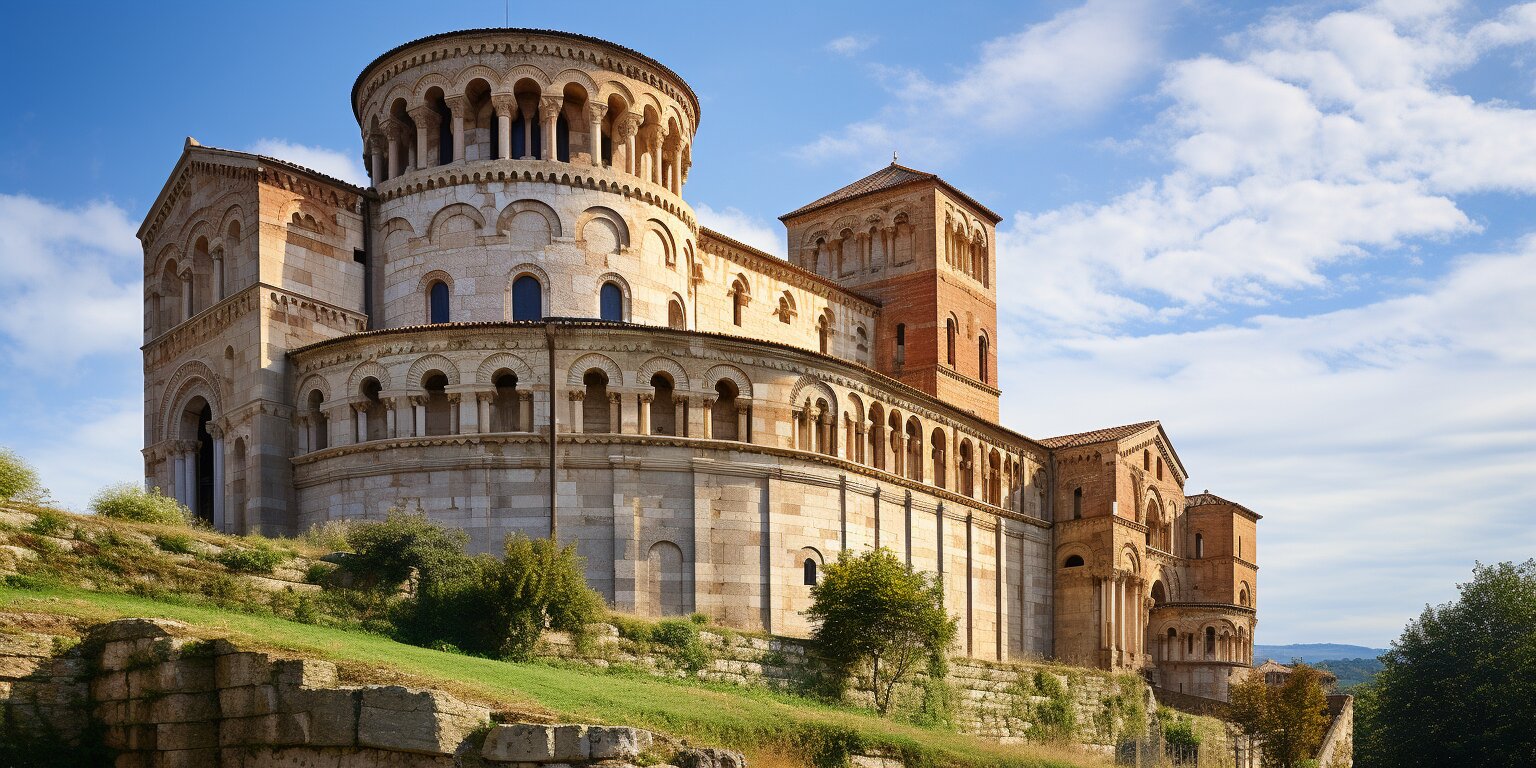The Myth of the Arcade in Ottonian Architecture
Throughout architectural history, terminology can evolve and sometimes even be misinterpreted. One such example is the concept of an arcade in Ottonian architecture (936-1056 AD). While some sources reference arcades as a defining characteristic of this style, a deeper look reveals a different story.
This article explores the essence of Ottonian architecture, clarifies the misconception surrounding arcades, and highlights the true defining elements of this influential period in European architecture.
Understanding Ottonian Architecture: A Blend of Influences
Ottonian architecture emerged during the reign of the Saxon Ottonian dynasty in Germany. It marked a significant period of artistic and architectural development, drawing inspiration from various sources:
- Carolingian Architecture: The immediate predecessor, characterized by large basilicas, strong geometric forms, and emphasis on light.
- Byzantine Architecture: Offering opulent decorations, mosaics, and centralized plans, particularly influential in church design.
- Early Christian Architecture: Laying the foundation with basilican plans and emphasis on symbolism.
Ottonian architects skillfully combined these influences, creating a unique style that reflected the growing power and cultural aspirations of the Ottonian dynasty.
The Misunderstood Arcade: Setting the Record Straight
The term “arcade” in the context of Ottonian architecture might be a source of confusion. Here’s why:
- True Arcades: In architecture, an arcade refers to a series of arches supporting a superstructure, often used in colonnades or walkways.
- Ottonian Reality: While Ottonian churches often featured interior arcades separating the nave (central hall) from the aisles (lateral walkways), these weren’t prominent external features.
The misconception likely stems from the influence of Carolingian architecture, where arcades were more prominent. However, Ottonian architects focused on other defining elements in their designs.
Defining Elements of Ottonian Architecture
Here are the key characteristics that truly define Ottonian architecture:
- Basilica Plans: Similar to Roman basilicas, Ottonian churches typically featured a central nave, flanked by aisles, and often an apse (semicircular sanctuary) at the eastern end.
- Westwork: A distinctive feature, the westwork was a monumental structure at the west end of the church, often incorporating towers, chapels, and entrances.
- Barrel Vaults and Groin Vaults: These vaulting techniques provided structural support for the roofs and ceilings.
- Emphasis on Light: Clerestories (upper windows) were strategically placed to bring natural light into the nave, creating a sense of spaciousness.
- Sculpture and Metalwork: Ottonian art flourished alongside architecture, with bronze casting techniques used for impressive doors, reliefs, and sculptures.
These elements combined to create a new architectural language that reflected the ambitions and religious fervor of the Ottonian era.
Examples of Ottonian Architecture
Several notable structures showcase the grandeur of Ottonian architecture:
- St. Michael’s Church, Hildesheim: A UNESCO World Heritage Site, this church exemplifies the use of a basilica plan, westwork, and impressive bronze doors.
- St. Cyriakus Church, Gernrode: One of the earliest Ottonian churches, it features a double-ended apse (apse at both ends) and a distinctive westwork.
- Aachen Cathedral: While incorporating Carolingian elements, Aachen Cathedral demonstrates the influence of Ottonian architecture with its impressive octagonal dome.
These surviving structures offer a glimpse into the architectural achievements of the Ottonian period.
A Legacy of Innovation
Ottonian architecture marked a significant turning point in European architectural history. Here’s its lasting impact:
- Bridging the Gap: It formed a bridge between Carolingian and Romanesque architecture, paving the way for further innovations.
- Symbol of Power: Ottonian structures served as powerful symbols of the Ottonian dynasty’s authority and religious devotion.
- Artistic Inspiration: The blending of influences and emphasis on art within architecture influenced future artistic movements.
By focusing on the true defining elements of Ottonian architecture, we can appreciate its unique contribution to the architectural landscape and its lasting influence on European art and culture.
FAQ
- Why is the term “arcade” misleading in Ottonian architecture?
The term “arcade” typically refers to a series of prominent external arches. While Ottonian churches often had interior arcades separating the nave from the aisles.
- What materials were typically used in Ottonian architecture?
Stone was the primary building material, with a preference for local sandstone varieties. Wood was also used for roofs and some interior elements. Bronze was a crucial material for the creation of impressive doors, sculptures, and reliefs, showcasing the Ottonian mastery of metalwork.
- How did Ottonian architecture influence Romanesque architecture?
Ottonian innovations like the use of groin vaults, emphasis on light, and the concept of the westwork laid the foundation for the development of Romanesque architecture. Romanesque architecture further developed these elements, creating a more unified and massive style.
- Can I see Ottonian architecture outside of Germany?
While Germany is the heartland of Ottonian architecture, influences can be seen in surrounding regions that had close cultural ties with the Ottonian dynasty. For example, some churches in Austria, Switzerland, and northern Italy display elements inspired by Ottonian architecture.
- Are there any modern architectural styles that draw inspiration from Ottonian architecture?
While not a direct influence, some modern architects have explored the use of basilica plans, massive stone structures, and the interplay of light and shadow, which were all elements present in Ottonian architecture. This demonstrates the enduring appeal and influence of Ottonian architectural principles.
By understanding the true essence of Ottonian architecture and dispelling misconceptions, we gain a deeper appreciation for this innovative and influential period in European architectural history.
Read more about it:https://genpromedia.com/how-long-can-cooked-shrimp-stay-in-the-fridge/






More Stories
Is there a lifetime limit on epidural steroid injection?
What is Section 20 of the Motor Accident Insurance Act (Queensland)?
Where to Watch USMNT vs Jamaica National Football Team